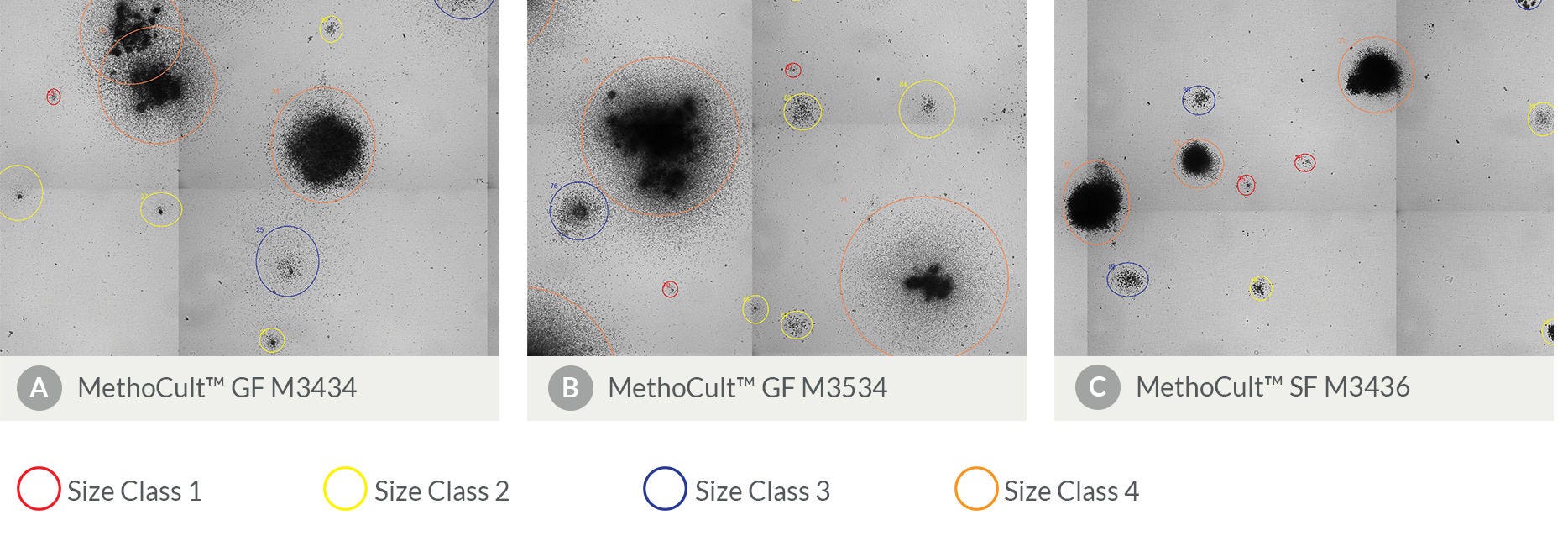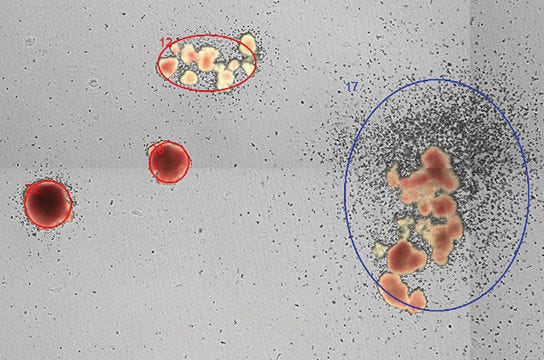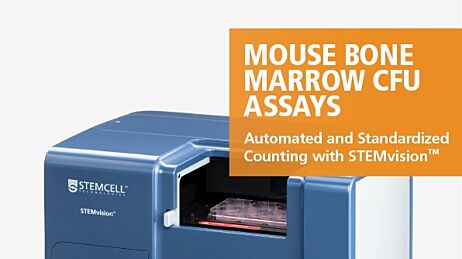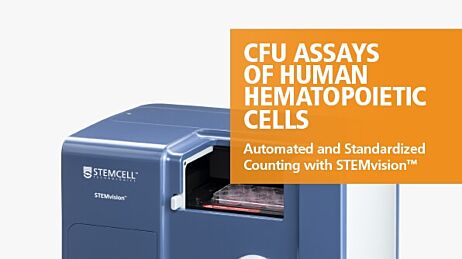STEMvision™ - Automated Counter for CFU Assays
STEMvision™ Hematopoietic Colony Counter
Automated and Standardized Counting of CFU Assays of Human and Mouse Hematopoietic Progenitor Cells
How to Standardize Hematopoietic Colony Counting with STEMvision™
Watch step-by-step guidelines on how to use STEMvision™ for automated imaging and counting of hematopoietic colonies in CFU assays.
Why Use STEMvision™?
- Achieve more accurate colony counts than with manual counting.
- Software reduces inter- and intra-individual and laboratory variation in colony counting.
- Standardized software reduces the time it takes to train new students and staff to recognize and count colonies.
- Culture wells are digitally imaged for permanent record keeping.
Data

Figure 1. Representative STEMvision™ Images Showing Colonies Derived from Human Cord Blood Progenitors After 7 Days of Culture in MethoCult™ Express, and from Human Cord Blood, Bone Marrow and Mobilized Peripheral Blood Progenitors After 14 Days of Culture in MethoCult™ Optimum
These images have been analyzed by STEMvision™ Human (A) 7-Day and (B-D) 14-Day Analysis Packages. Green circles identify individual colonies in a 7-day cord blood CFU assay that scores total CFUs only (A). Orange and red circles identify erythroid colonies, yellow circles identify myeloid colonies and blue circles identify mixed colonies in 14-day cord blood (B), bone marrow (C) and mobilized peripheral blood (D) CFU assays. Erythroid and mixed colonies that contain hemoglobinized cells are shown in true red color.

Figure 2. Representative STEMvision™ Images Showing Colonies Derived from Mouse Bone Marrow Progenitors After 12 Days of Culture in MethoCult™ GF M3434, MethoCult™ GF M3534 or MethoCult™ SF M3436 Media
Images of mouse bone marrow cells cultured in (A) MethoCult™ GF M3434, (B) MethoCult™ GF M3534 and (C) MethoCult™ SF M3436 were acquired using STEMvision™. The corresponding STEMvision™ Mouse Analysis Package (i.e. Total CFU Analysis Package (A), Myeloid CFU Analysis Package (B) or Erythroid CFU Analysis Package (C)) was used to analyze each image. Red circles identify the smallest colonies - size class 1, yellow circles - size class 2, blue circles - size class 3 and orange circles identify the largest colonies - size class 4.
Applications and Regulatory Compliance
In addition to the quantification of progenitor cell numbers and subtypes in normal hematopoietic samples, the CFU assay may be used to compare the relative progenitor cell function of modified samples. Through this use, the CFU assay and STEMvision™ have become important tools for the development of new cell and gene therapies, including the assay of CD34+ cells that have been expanded, modified or edited (e.g. with CRISPR-Cas9) ex vivo.
Higher compliance environments such as quality control or manufacturing departments may face additional requirements such as compliance to FDA Title 21 CFR Part 11 regulations on electronic records. The STEMvision™ software suite is designed for research use only (RUO) applications. However, STEMvision™ can support compliance to 21 CFR Part 11 regulations through the addition of the STEMvision™ 21 CFR Part 11 Compliance Software Add-On (Catalog #500-0110).
The STEMvision™ 21 CFR Part 11 Compliance Software Add-On provides numerous features to increase the security of electronic records, including:
- User authentication and restricted access levels
- Electronic signatures (human analysis packages only)
- Logging of software events and the creation of audit trails
For more details, please refer to the STEMvision™ product page, STEMvision™ Manual, or contact us. Learn more about our approach and commitment to quality and how we can support your regulatory and compliance by visiting our Quality at STEMCELL page.
CFU Assay Resources
Explore our resources for information and support on setting up, optimizing, and standardizing the CFU assay.
Introduction to STEMvision™ for Automated CFU Scoring Course
Learn how to standardize and automate the scoring of the CFU assay using STEMvision™ in this self-paced digital course. You’ll gain access to lectures, step-by-step protocol videos, and a library of curated resources.









